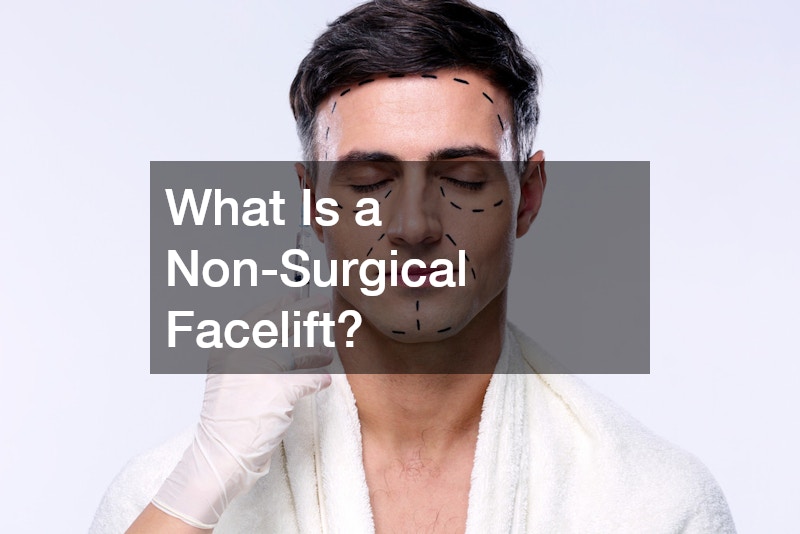In recent years, the demand for non-surgical facelifts has surged, offering a viable alternative for those wary of traditional surgical methods. By choosing non-surgical procedures, individuals can enhance their appearance without the downtime associated with surgery. The rise in popularity can be attributed to advancements in cosmetic technology that provide effective results with minimal risk.
Non-surgical facelifts primarily aim to rejuvenate the face by addressing common signs of aging like wrinkles and sagging skin. These procedures often use minimally invasive techniques such as dermal fillers, botox, and laser treatments. By revitalizing the skin and diminishing lines, individuals can achieve a youthful look without undergoing invasive surgery.
Another advantage is the affordability and accessibility of non-surgical options compared to their surgical counterparts. Patients can often receive treatment in outpatient settings, reducing the need for hospital stays. This convenience, coupled with cost-effectiveness, makes non-surgical facelifts an appealing choice for many.
Common Techniques Used in Non-Surgical Facelifts
Various techniques are employed in non-surgical facelifts, each catering to different needs and preferences. Dermal fillers are a popular choice, using substances like hyaluronic acid to plump up and smoothen areas such as the cheeks and lips. Fillers can enhance facial contours and erasing wrinkles, providing immediate and noticeable results.
Botox is another common method, effectively reducing the appearance of fine lines and wrinkles by temporarily paralyzing facial muscles. This reduces muscle activity that causes crow’s feet, forehead lines, and other facial creases. Botox has become widely used due to its ability to deliver quick results with minimal discomfort and no downtime.
Laser treatments offer a more comprehensive rejuvenation, targeting deeper layers of the skin to stimulate collagen production. By enhancing skin texture and tone, lasers can help tighten loose skin and diminish discoloration. These treatments contribute to a more youthful and refreshed appearance over time.
Benefits of Non-Surgical Facelifts
Non-surgical facelifts provide numerous benefits that make them an attractive option for those looking to enhance their appearance. One of the most significant advantages is the reduced recovery time compared to traditional surgery, allowing individuals to return to their daily activities almost immediately. This is particularly appealing to busy individuals who cannot afford long periods of downtime.
Additionally, these procedures are generally less invasive, reducing the risk of complications associated with surgical procedures, such as infections and scarring. With fewer side effects, patients can experience a safer transformation without the potential risks that come with going under the knife. Non-surgical options offer peace of mind, knowing that the procedure is both effective and safe.
Moreover, the results from non-surgical facelifts can be tailored to suit personal preferences, offering natural-looking enhancements that subtly restore youthful features. This personalized approach allows for adjustments over time, ensuring satisfaction with the final outcome. By providing flexibility and customization, non-surgical facelifts meet the individual aesthetic goals of each patient.
Considerations and Limitations of Non-Surgical Facelifts
While non-surgical facelifts offer myriad benefits, it is essential to consider some limitations before undergoing treatment. The results achieved are generally less dramatic and more temporary compared to surgical options. Patients seeking significant alteration may need to consider alternative or supplementary procedures for more substantial changes.
Another potential concern is the necessity of multiple sessions to maintain the desired effect. To sustain the results, many procedures require regular touch-ups, which can amount to a long-term financial commitment. Patients must weigh the cost and maintenance required against the appeal of the non-surgical approach.
Additionally, some individuals may be ineligible for certain treatments due to underlying health conditions or specific skin types. A thorough consultation with a qualified practitioner is essential to determine the suitability of non-surgical facelifts. This ensures that the chosen procedure aligns with the patient’s unique needs and medical history.
Conclusion: Is a Non-Surgical Facelift Right for You?
As the popularity of non-surgical facelifts continues to rise, more individuals are exploring these minimally invasive options to enhance their appearance. For those seeking subtle improvements with minimal downtime, non-surgical facelifts provide a viable and attractive alternative to traditional surgery. They offer a range of benefits, including accessibility, affordability, and customizable results.
However, it’s crucial to approach these procedures with realistic expectations and an understanding of their limitations. Consulting with a skilled and experienced cosmetic professional will help in making an informed decision. By weighing the benefits and considerations, individuals can determine whether a non-surgical facelift aligns with their aesthetic goals and lifestyle.
Ultimately, non-surgical facelifts present opportunities for rejuvenation without the lengthy recovery and potential risks of surgery. For many, they represent an ideal balance between achieving enhancement and maintaining a natural, refreshed appearance. As technology continues to evolve, these procedures are likely to become even more effective, offering a future of possibilities for those seeking non-surgical rejuvenation.
.




